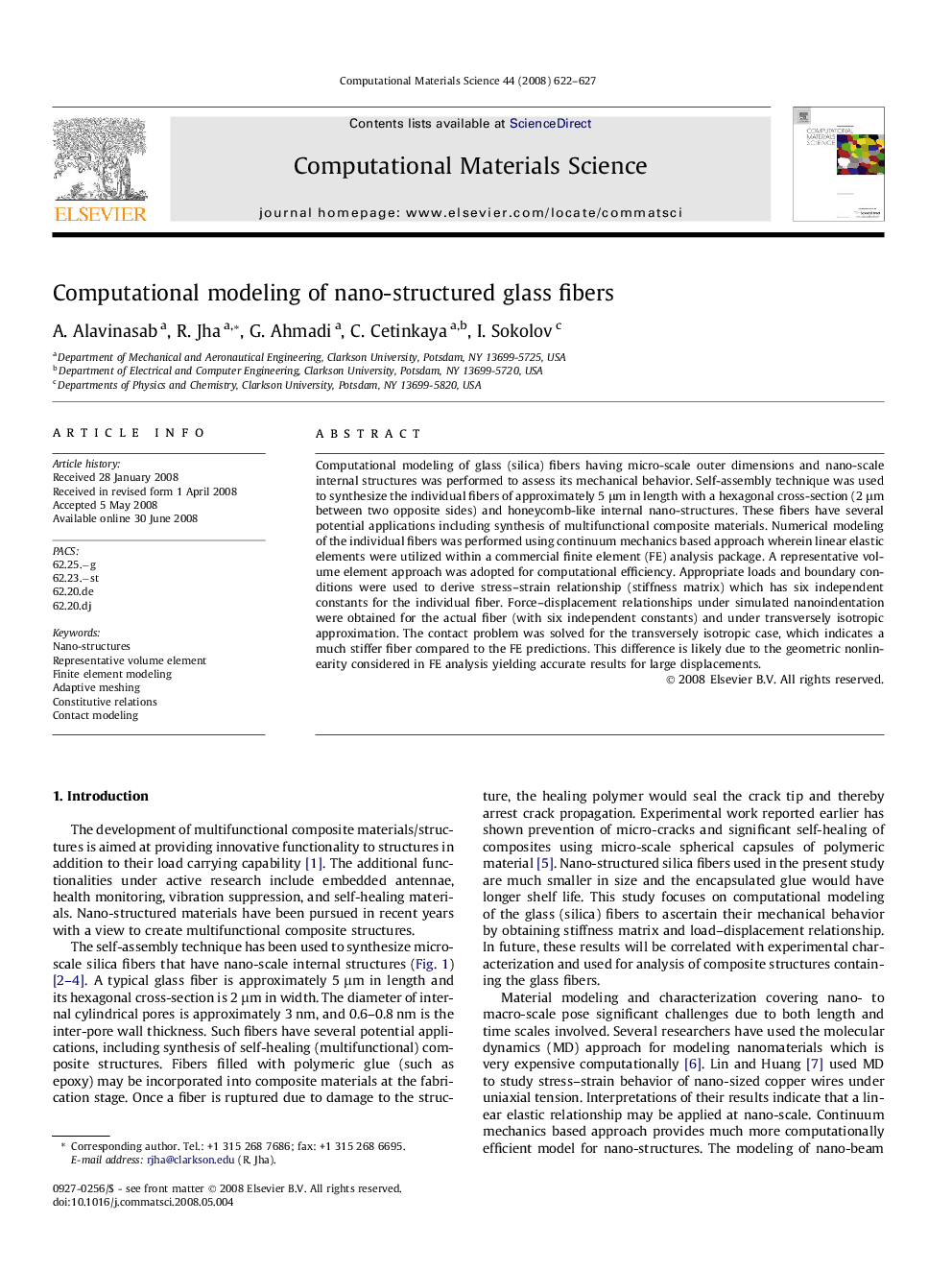| Article ID | Journal | Published Year | Pages | File Type |
|---|---|---|---|---|
| 1563229 | Computational Materials Science | 2008 | 6 Pages |
Abstract
Computational modeling of glass (silica) fibers having micro-scale outer dimensions and nano-scale internal structures was performed to assess its mechanical behavior. Self-assembly technique was used to synthesize the individual fibers of approximately 5 μm in length with a hexagonal cross-section (2 μm between two opposite sides) and honeycomb-like internal nano-structures. These fibers have several potential applications including synthesis of multifunctional composite materials. Numerical modeling of the individual fibers was performed using continuum mechanics based approach wherein linear elastic elements were utilized within a commercial finite element (FE) analysis package. A representative volume element approach was adopted for computational efficiency. Appropriate loads and boundary conditions were used to derive stress-strain relationship (stiffness matrix) which has six independent constants for the individual fiber. Force-displacement relationships under simulated nanoindentation were obtained for the actual fiber (with six independent constants) and under transversely isotropic approximation. The contact problem was solved for the transversely isotropic case, which indicates a much stiffer fiber compared to the FE predictions. This difference is likely due to the geometric nonlinearity considered in FE analysis yielding accurate results for large displacements.
Keywords
Related Topics
Physical Sciences and Engineering
Engineering
Computational Mechanics
Authors
A. Alavinasab, R. Jha, G. Ahmadi, C. Cetinkaya, I. Sokolov,
